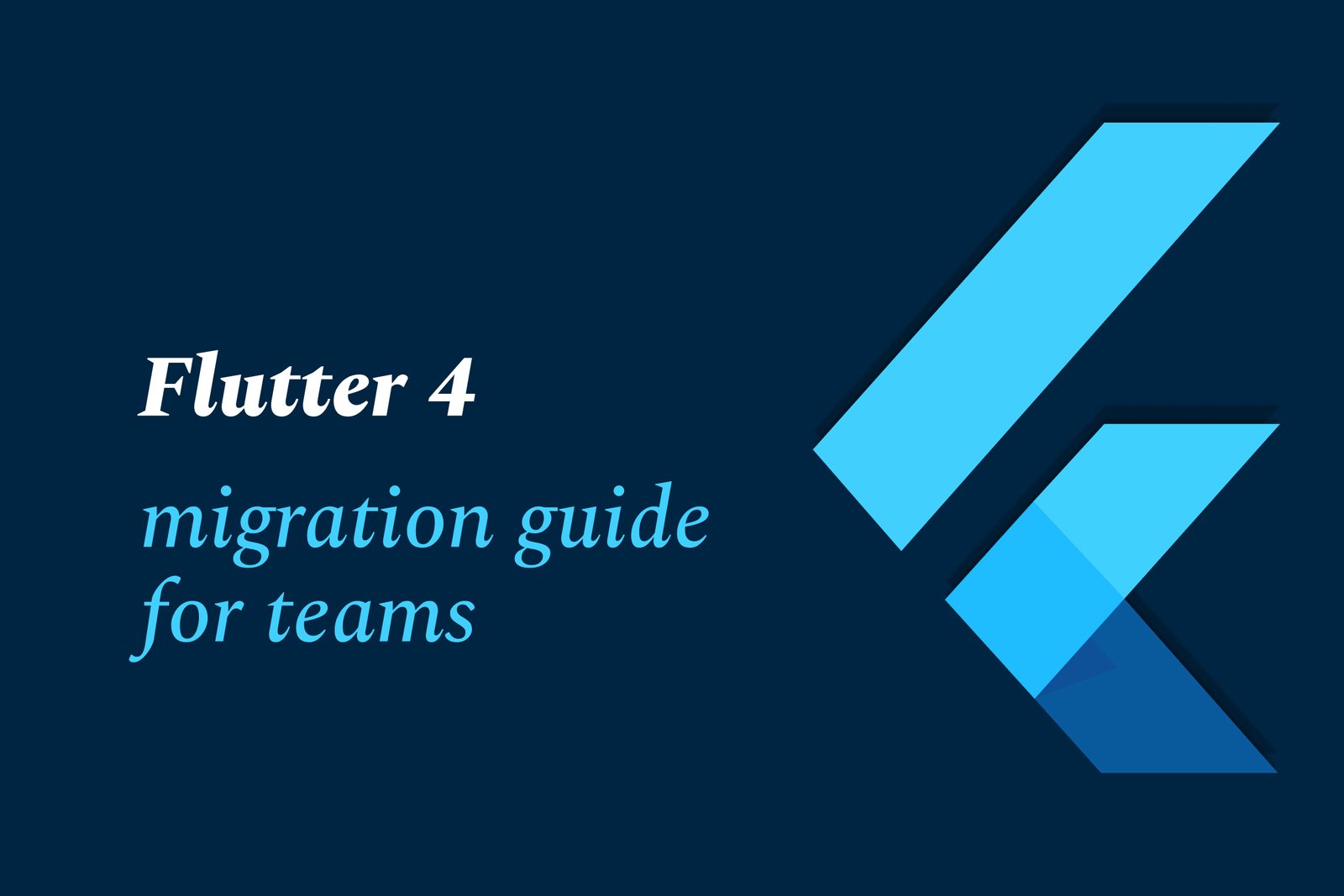Flutter 4 Migration Guide for Teams
The Flutter 4 migration guide for teams outlines essential steps to smoothly upgrade projects, covering SDK updates, dependency compatibility, handling breaking changes, testing, and team collaboration to ensure a seamless transition and maximize new Flutter 4 features and improvements.
Flutter 4 Migration Guide for Teams
1 ) Introduction and Importance of Migration
Migrating to Flutter 4 is essential for teams to leverage the latest features, performance improvements, and long term support.
Teams should approach migration methodically to minimize disruptions and maintain project stability.
2 ) Preparation Steps Before Migration
Update Flutter SDK: Ensure all team members switch to the Flutter 4 SDK version.
Dependency Audit: Verify that all project dependencies and third party packages are compatible with Flutter 4; wait for updates if necessary.
Backup Codebase: Maintain version controlled backups before making any migration changes.
3 ) Key Migration Actions
Update `pubspec.yaml`: Adjust dependencies to their Flutter 4 compatible versions, including core packages such as `flutter`, `firebase_core`, and others.
Adopt New APIs and Features: Replace deprecated methods and integrate new APIs introduced in Flutter 4.
Resolve Breaking Changes: Address any breaking changes highlighted in the official Flutter 4 release notes, especially around rendering, state management, and widget behavior.
4 ) Testing and Validation
Automated Tests: Run unit, widget, and integration tests after migration to detect regressions.
Performance Checks: Benchmark app performance to identify and fix any degradations related to the upgrade.
Manual QA: Conduct thorough manual testing across supported platforms and devices.
5 ) Team Collaboration and Workflow Adjustments
Documentation: Update team documentation to reflect Flutter 4 changes and best practices.
Training: Provide developers with learning resources for new Flutter 4 features.
CI/CD Pipeline: Adjust continuous integration and deployment setups to use Flutter 4 tools and commands.
6 ) Post Migration Recommendations
Monitor Stability: Track application stability and error reports closely following migration.
Engage with Community: Stay updated with Flutter community channels for ongoing tips, issues, and patches.
Plan for Incremental Updates: Avoid large scale changes immediately after migration; implement additional enhancements gradually.
Summary:
Successfully migrating to Flutter 4 requires meticulous preparation, updating dependencies, addressing breaking changes, and comprehensive testing. Involving the whole development team ensures a smooth transition and the full benefits of the new Flutter version.
https://justacademy.in/news-detail/flutter-india-summit-2025:-key-takeaways
https://justacademy.in/news-detail/flutter-lts-release:-what-it-means
https://justacademy.in/news-detail/flutter-roadmap-beyond-2025
https://justacademy.in/news-detail/flutter-web-is-now-production-ready:-key-announcements
https://justacademy.in/news-detail/flutter-now-supports-desktop-and-embedded-devices
Related Posts
In 2025, top Angular libraries offer modern, feature-rich components and tools for building dynamic web apps. From powerful data grids to low-code platforms like UI Bakery, these libraries enhance development speed, UI design, and scalability, making them essential for Angular developers.
Migrating from AngularJS to Angular 17 involves gradually upgrading your app by running both frameworks together using tools like ngUpgrade, rewriting components in TypeScript, and adopting Angular’s modern architecture to enhance performance, maintainability, and long-term support.
Angular state management tools help organize and handle app data efficiently, improving scalability and maintainability. Popular options include NgRx for robust, RxJS-based patterns, and newer Signal Store solutions that offer simpler, reactive approaches integrated tightly with Angular’s latest features.
RxJS in Angular empowers developers to manage asynchronous data streams with powerful operators like `forkJoin`, `combineLatest`, and `zip`. Mastering these key operators in 2025 is essential for building efficient, reactive applications that handle complex event sequences seamlessly.
Angular performance optimization in 2025 focuses on improving app speed and responsiveness by using techniques like OnPush change detection, lazy loading, efficient data caching, and AOT compilation. These practices reduce load times, enhance user experience, and ensure scalable, fast Angular applications.
In 2025, Angular remains preferred for large-scale, enterprise apps with its robust, all-in-one framework, while Vue attracts developers seeking simplicity and fast development for smaller projects. Both frameworks excel, with choice driven by project needs and team expertise.
Angular Signals are a new reactive primitive in Angular 16 that enable fine-grained, efficient change detection by automatically tracking dependencies and updating only affected parts of the UI. They simplify state management and boost app performance, revolutionizing Angular's reactivity model.
Angular interview questions to prepare in 2025 focus on core concepts like components, directives, data binding, routing, and dependency injection, along with TypeScript mastery and latest Angular features to ensure strong practical knowledge for building scalable, efficient web applications.
AngularJS reached its official end of support in January 2022, meaning no further updates or security patches. To ensure app security and performance, developers should consider migrating to modern Angular versions or seek third-party long-term support options if immediate migration isn’t possible.
The Angular Roadmap 2025 highlights upcoming features focused on improving developer experience and performance, including zoneless Angular, Signals integration, enhanced Forms, async data handling, improved HMR, and expanded Angular Material/CDK enhancements, driving modern, efficient web app development.










